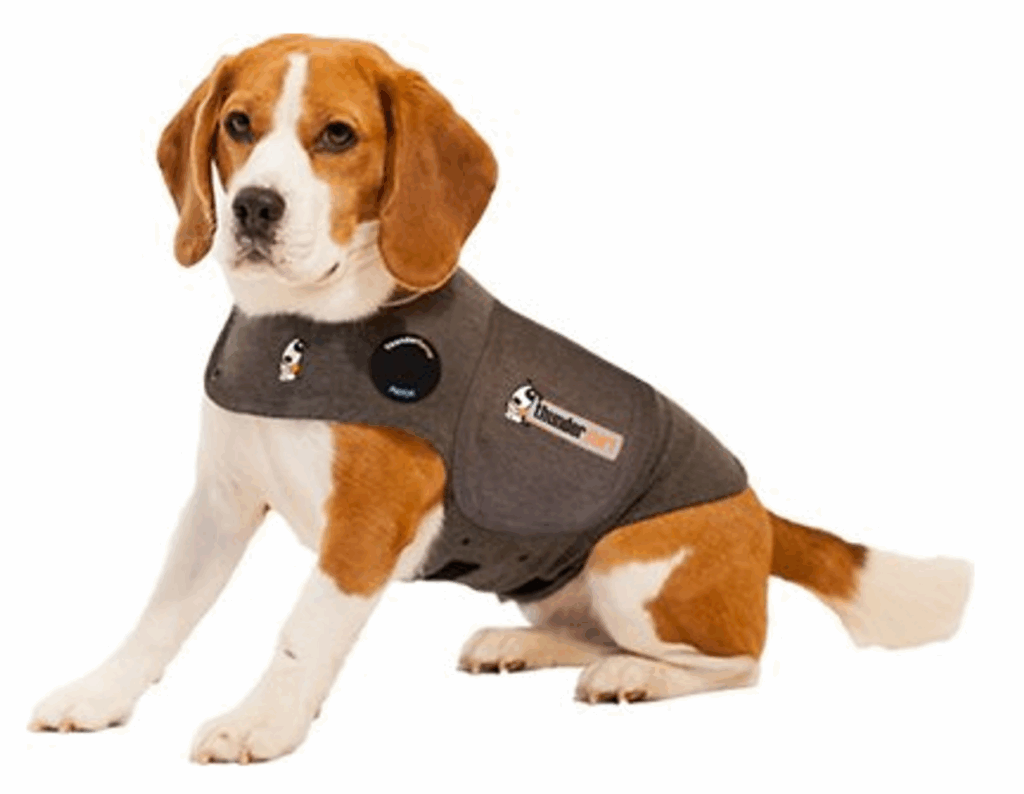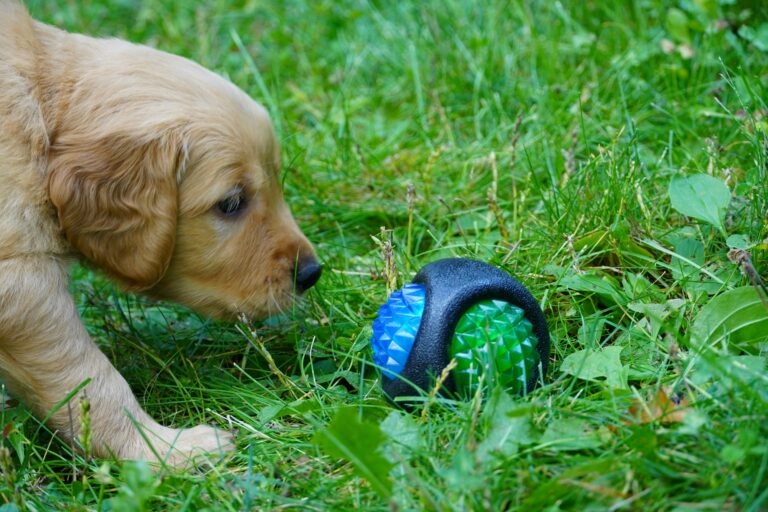Discovering that your small breed dog suffers from separation anxiety can be a distressing realization. The sight of a beloved pet showing signs of severe distress when left alone can leave owners feeling helpless and guilt-ridden. However, this post aims to shed light on effective solutions that can help alleviate the anxiety faced by your canine companion, making their alone time more bearable.
Separation anxiety is a condition that is often misunderstood, with many assuming that it’s a sign of a poorly trained dog. On the contrary, it’s a serious condition that needs a comprehensive approach for management and treatment. By the end of this post, we aim to provide a better understanding of the problem, debunk some common misconceptions, and provide practical solutions to help your furry friend.
In this in-depth look at small breed separation anxiety, we’ll discuss some of the common symptoms to watch out for, such as excessive barking, destructive behavior, and inappropriate urination or defecation. Additionally, we will delve into the causes of separation anxiety, exploring how factors like breed, age, and past experiences can contribute to its onset.

Furthermore, we’ll provide you with a range of solutions, from simple tips and tricks to more complex strategies involving behavior modification techniques and, if needed, professional help. The goal is to give you the tools you need to help your dog feel secure and calm, even when you’re not around. So, sit back, grab a cup of coffee, and let’s delve into the world of soothing separation anxiety in small breed dogs. 🐾🐾
Understanding Canine Separation Anxiety in Small Breeds
Separation anxiety in dogs is a concern faced by many pet owners. This psychological disorder manifests when a dog is distressed due to separation from its owner or from the familiar environment. It is particularly common among small breeds, often because they are more likely to be indoor dogs and are more attached to their human companions. The emotional bond that small breed dogs form with their owners is typically intense, making them more vulnerable to feelings of abandonment when their owners are absent, even for short periods.
These dogs often perceive their owners as their primary source of security and comfort. When they are suddenly deprived of this presence, it can trigger a cascade of emotional and physiological responses that lead to problematic behaviors. Understanding the underlying dynamics of this attachment is key to managing and mitigating separation anxiety in small breeds.
Recognizing the Signs
Separation anxiety can cause a range of behavioral issues. Common signs include excessive barking, howling, destructive behavior, and inappropriate urination or defecation. Dogs may also show signs of restlessness, depression, and excessive grooming. A dog exhibiting one or more of these behaviors in the absence of its owner may be suffering from separation anxiety.

In addition to these common symptoms, some dogs may display attempts to escape, often resulting in self-injury. Chewing on doors, scratching at windows, or damaging furniture are behaviors that often emerge as manifestations of panic. Furthermore, subtle signs such as a lack of appetite, trembling, or following the owner around the house before departure can also be indicative of an underlying anxiety issue.
Being observant and recognizing these early warning signs allows owners to intervene early, potentially preventing the anxiety from escalating into a more severe condition.
Contributing Factors
Various factors can contribute to separation anxiety in small breeds. Genetics plays a role, as certain breeds are more prone to anxiety disorders. Life experiences, such as being adopted from a shelter or having experienced traumatic events, can also contribute. A sudden change in the owner’s schedule, moving to a new home, or the loss of a family member can trigger separation anxiety in dogs.
Certain small breeds, including Bichon Frises, Chihuahuas, and Cavalier King Charles Spaniels, are particularly known for their strong attachment to humans. Puppies who have been prematurely separated from their mothers, dogs who have not been adequately socialized, and dogs who have experienced multiple rehomings are at a higher risk of developing separation anxiety.
Moreover, environmental instability during formative periods of a dog’s development can create long-lasting emotional scars, making them more susceptible to stressors associated with separation later in life.
Managing Separation Anxiety: Strategies and Solutions
Managing separation anxiety in small breed dogs requires a multifaceted approach. No single solution will work for all dogs, and it often takes a combination of strategies to effectively alleviate the anxiety. Addressing both the emotional and environmental aspects of the dog’s life is necessary for comprehensive management.
Owners must be patient and persistent, as the process of easing separation anxiety can take weeks or even months. Positive reinforcement and a deep understanding of the dog’s individual needs play a crucial role in successful intervention.
Training and Behavior Modification
Training is a crucial component in managing separation anxiety. This could involve gradually conditioning the dog to be alone through a process called desensitization. Start by leaving your dog alone for short periods and gradually increase the time.
Counter-conditioning techniques can also be employed, aiming to change the dog’s emotional response to being alone. For example, associating departure cues such as picking up keys or putting on a coat with positive outcomes like receiving a favorite treat can lessen the dog’s anticipatory anxiety.
Consistency is key. Regular practice and maintaining a calm demeanor during departures and arrivals will help reinforce the notion that being alone is a normal and safe experience.
Environmental Enrichment
Providing a stimulating environment can also help reduce separation anxiety. This could include providing toys, interactive feeders, or even audiovisual stimuli such as a TV or radio playing softly.
Puzzle toys filled with treats or frozen food can keep the dog mentally engaged while alone, redirecting their focus from the owner’s absence to a rewarding activity. Scented toys or clothing items carrying the owner’s scent can offer comfort.
Interactive pet cameras that allow owners to monitor and even communicate with their dogs remotely can also provide a sense of connection and reassurance during periods of separation.
Establishing a Predictable Routine
Dogs thrive on routine, and establishing a predictable daily schedule can greatly reduce anxiety. Feeding, walking, and playtimes should occur at roughly the same times each day, providing structure and security.
Departure and return rituals should be kept low-key to avoid creating heightened emotional responses around these events. Ignoring the dog for a few minutes before leaving and upon returning can help normalize the comings and goings of the household.
Safe Spaces and Comfort Zones
Creating a designated safe space can be incredibly beneficial for an anxious dog. A crate, when properly introduced and used as a positive retreat rather than a punishment, can serve as a secure den where the dog feels safe.
Alternatively, setting up a small, comfortable room equipped with the dog’s favorite bed, toys, and items that carry the owner’s scent can also provide a reassuring environment during periods of solitude.
Exercise and Mental Stimulation
Exercise is one of the most effective ways to combat separation anxiety. Regular physical activity helps to expend excess energy and promotes the release of endorphins, natural mood enhancers. A tired dog is more likely to relax and rest when left alone.
Incorporating activities like agility training, scent work, or obedience games can also provide valuable mental stimulation, further reducing the likelihood of anxiety-related behaviors.
Professional Training and Therapy Options
When home management strategies prove insufficient, professional assistance may be necessary. Certified dog trainers who specialize in separation anxiety can create tailored behavior modification programs, while veterinary behaviorists can address more complex cases, potentially involving pharmacological intervention.
Some advanced therapeutic options include:
- Behavioral Adjustment Training (BAT): Teaching the dog new, more appropriate behaviors in stressful situations.
- Cognitive Behavioral Therapy (CBT) Adaptations for Dogs: Techniques that address the root cause of anxiety by changing thought patterns, although this is typically applied by professionals.
- Medication: In conjunction with training, medication can help lower anxiety levels to a manageable degree, allowing learning and adaptation to take place more effectively.
Use of Calming Aids and Supplements
Non-prescription calming aids can also be beneficial for dogs with mild to moderate separation anxiety. These may include:
- Pheromone diffusers that mimic calming natural dog pheromones
- Weighted or pressure vests that provide a sense of security
- Herbal remedies and supplements containing ingredients like L-theanine, passionflower, or valerian root
Always consult with a veterinarian before introducing any supplement or new therapy to ensure safety and suitability for your specific dog.
Owner Education and Support
Owners play a pivotal role in the success of any separation anxiety management plan. Educating oneself about canine behavior and anxiety disorders is essential. Support groups, both online and in-person, can offer encouragement and practical advice from others facing similar challenges.
Attending seminars, reading evidence-based materials, and collaborating closely with veterinarians or behaviorists enhance an owner’s ability to provide consistent, informed care to their pet.
Medical Treatment Options
In severe cases of separation anxiety, medication may be necessary. These are usually prescribed by a veterinarian and used in conjunction with behavior modification techniques.
Anti-Anxiety Medications
There are several types of anti-anxiety medications that can be prescribed for dogs. Selective serotonin reuptake inhibitors (SSRIs) and tricyclic antidepressants (TCAs) are commonly used.
Natural Supplements
Natural supplements can also be used to manage separation anxiety in dogs. Ingredients such as L-Theanine, chamomile, and valerian root have calming effects and can be found in various pet supplements.
Role of Diet and Exercise
A healthy diet and regular exercise can go a long way in managing separation anxiety.
Proper Nutrition
A balanced diet can help regulate a dog’s mood and energy levels. Some nutrients, such as Omega-3 fatty acids, are known to have calming effects and can be beneficial for dogs with separation anxiety.
Physical Activity
Regular exercise helps reduce stress and anxiety in dogs. It also helps keep them mentally stimulated and physically tired, making them less likely to engage in destructive behavior when left alone.
Importance of Professional Help
While many cases of separation anxiety can be managed at home, it’s essential to seek professional help when necessary.
Consulting a Behaviorist
A certified applied animal behaviorist or a board-certified veterinary behaviorist can provide valuable insights and create a personalized treatment plan for your dog.
Veterinary Assistance
A vet can diagnose the severity of the condition, rule out medical causes of the behavior, and prescribe medication if necessary.
In conclusion, managing separation anxiety in small breed dogs involves understanding the problem, implementing effective management strategies, and seeking professional help when necessary. With patience, consistency, and appropriate care, it’s possible to alleviate this distressing condition and ensure your canine companion’s well-being.
Conclusion
Managing separation anxiety in small breed dogs is a complex task, requiring patience, understanding, and a strategic approach. As we have seen, the soothing solutions for a calmer canine include maintaining a consistent routine, providing sufficient physical and mental stimulation, implementing gradual desensitization techniques, and potentially even exploring medication options. It is important to remember that every dog is unique, and what works for one may not necessarily work for another. Thus, it is crucial to be patient, consistent, and, most importantly, supportive throughout the process.
Ensuring your pet feels safe, secure, and loved can make a world of difference in easing their anxiety. Small breed dogs often look to their owners as their primary source of comfort, and reinforcing this bond with positive reinforcement, affectionate interactions, and a stable environment can significantly improve their emotional resilience. While it may be challenging at times, the results — a calmer, happier, and healthier pet — are undoubtedly worth the effort.
Always consult with a professional if your dog’s anxiety becomes overwhelming or interferes with their daily life. Veterinary behaviorists and professional dog trainers possess specialized knowledge that can be invaluable in developing an effective treatment plan. They can help tailor strategies specific to your dog’s individual needs, ensuring a better chance of success.
In addition, educating yourself about canine behavior and anxiety can empower you to make more informed decisions about your pet’s care. Taking the time to learn and understand what your dog is experiencing will strengthen your relationship and make the journey toward recovery smoother.
Remember, our pets give us their unwavering love and companionship without hesitation. It is our responsibility to provide them with the care, patience, and understanding they deserve. No matter how small the progress may seem, every step you take to alleviate your dog’s anxiety contributes to a lifetime of trust, happiness, and emotional well-being for your loyal companion. 🐾🐶



